
18 Top PE Activities for Dynamic Physical Education Classes
Imagine a classroom where every student is engaged, energized, and eager to learn. This isn't a fantasy—it's a regular day in a well-designed physical education program. Studies have shown that students who participate in regular physical activity exhibit improved attention, faster cognitive processing speed, and better academic performance overall. But the benefits of physical education extend far beyond the classroom walls, deeply influencing students' physical, social, and emotional health. Through PE, students learn the importance of staying active, working as a team, and setting personal health goals.

In the diverse world of PE, activities range from dynamic warm-ups that get hearts racing, to skill development movements that focus on precision and coordination, to small group games that teach the value of cooperation and spirited competition. They cater to warming up young muscles, developing essential motor skills, fostering teamwork, and improving overall fitness. But the benefits don't stop at physical health; these activities are instrumental in teaching students about cooperation, respect, and the value of setting and achieving personal goals.

My goal with this article is to equip PE teachers, professionals, and even classroom teachers with a diverse toolkit of PE activities. Whether you're looking to energize your students at the start of a class, build their fitness levels, or foster a spirit of teamwork, I've curated a list of 18 top PE activities, neatly categorized for ease of use. These activities are designed to be adaptable, ensuring that regardless of your students' ages or abilities, you can create a dynamic learning environment that motivates and inspires.
So, let's dive into this collection of engaging, dynamic PE activities designed to energize, educate, and inspire both you and your students. Together, we can transform the physical education experience, one activity at a time.
Click the link to skip to a section:

Section 1: Instant Activities
Section 2. tag games, section 3. fitness-based movement activities, section 4. pe equipment - skill challenges, section 5: pe stations, section 6. small group games.
Section 7. Final Thoughts
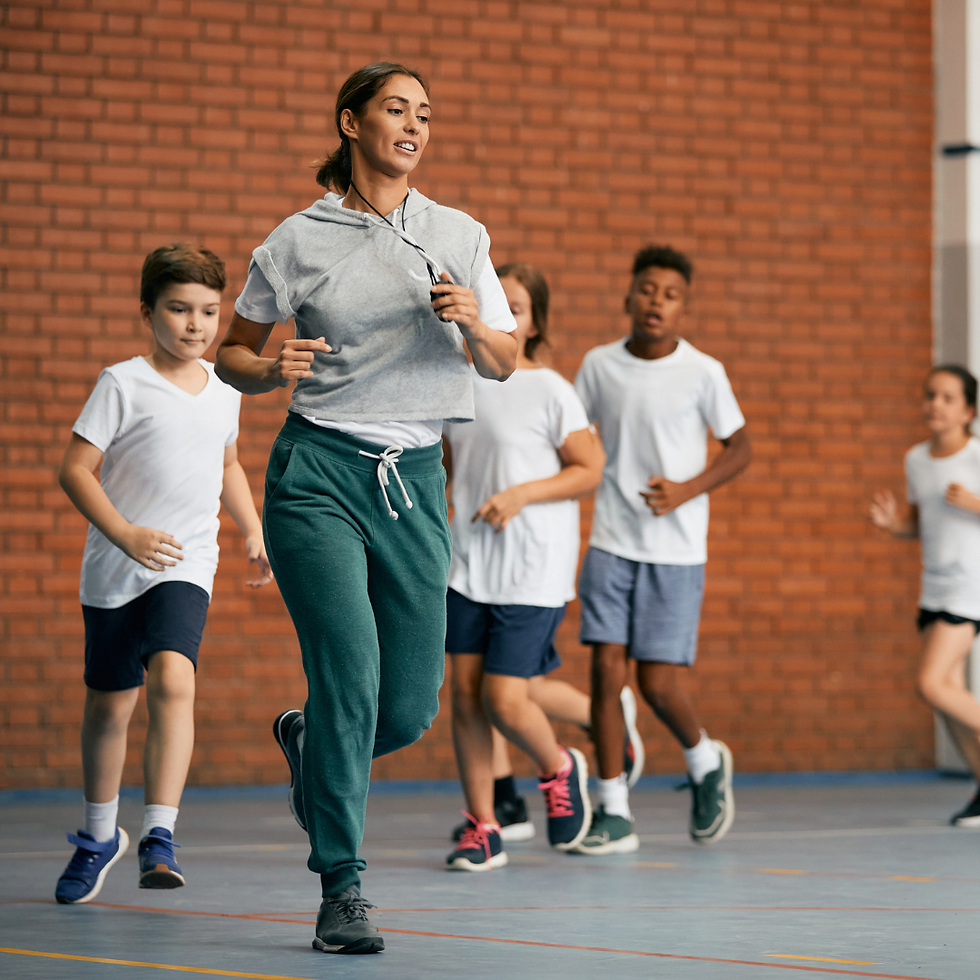
Instant activities are designed to energize students right at the beginning of a PE class, immediately engaging them in physical activity. These activities serve as quick warm-ups, helping to transition students from an academic mindset to a physical education environment with minimal downtime. The key is to captivate students' attention and get them moving as soon as they enter the PE space, setting a dynamic tone for the rest of the session. Instant activities work well with younger students that need quick and easy movement experiences to start their physical education classes.
Key Benefits:
Quick Setup: Most activities require little to no preparation, allowing for immediate start.
Minimal Equipment: Simplifies organization and facilitates a swift transition into physical activity.
Immediate Student Engagement: Captures students' attention from the moment they enter the PE area, promoting enthusiasm and readiness for the day’s lesson.
Instant Activity 1: Four Corner Fitness
Overview: Four Corner Fitness is a circuit-style activity that gets students moving around the gym's four corners, each corner offering a new exercise challenge. By incorporating varied locomotor movements for transitions, this activity adds an element of excitement and unpredictability, keeping students engaged and active throughout.
Equipment Needed: 8 cones, signs indicating exercises and locomotor movements (laminated for durability), stopwatch or timer.

Instructions:
Arrange 8 cones in the gym's four corners, placing two in each corner.
Attach signs to each cone - one sign for the exercise to be performed in that corner and another for the locomotor movement needed to get to the next corner.
At the start signal, students begin with the designated locomotor movement towards the first corner.
At each corner, students perform the indicated exercise for 20-30 seconds.
After completing the exercise, students proceed to the next corner using the locomotor movement indicated on the next sign.
The activity continues for 5-10 minutes, encouraging endurance and agility as students complete the circuit around the four corners.
Instant Activity 2: Sports Mania
Overview: Sports Mania turns the gym into a dynamic playground where students practice transporting various sports equipment from one corner of the gym to the next. This activity is not only a lot of fun but also helps students familiarize themselves with different sports equipment and the basic skills associated with each.
Equipment Needed: A variety of sports equipment (basketballs, soccer balls, beanbags, hockey sticks, paddleball rackets, scarves, beach balls, balloons, footballs), cones to mark the corners.

Spread assorted sports equipment in the gym's corners.
As students enter, they head to the nearest corner and select a piece of equipment.
Designate specific locomotor movements for transporting the equipment to the next corner (e.g., dribble basketballs, balance beanbags on the head).
Students continue moving equipment from corner to corner, experimenting with different items and movements.
Continue for a set time, encouraging students to try as many different types of equipment and movements as possible.
Instant Activity 3: Build it, Wreck it
Overview: "Build it Wreck it" is an exciting and dynamic activity that encourages students to engage in various locomotor movements around the gym. The objective is to either set cones upright (building) or knock them over (wrecking), fostering a playful environment that promotes physical fitness and spatial awareness.
Equipment Needed: 20 – 50 cones (any size - different colors), music for cues.

Scatter cones randomly across the gym floor.
Assign students to "home teams" based on cone color and review locomotor movements and safety.
On the musical cue, students move to flip over opposing teams' cones while keeping their own team's cones upright.
A student cannot touch the same cone twice in a row.
The team with the most upright cones at the end of the set time wins.
Change the locomotor movement (e.g., hopping, skipping, sliding, etc.) every 1-3 minutes to keep the activity fresh and challenging.
Click the link to view this 25 Instant Activity Set on Cap'n Pete's website store or here on Teachers Pay Teacher s .

Kids love tag games and they are a staple in physical education for a good reason. They combine the thrill of the chase with the benefits of quick sprints, agile dodging, and strategic play. By incorporating tag games (like bridge tag or blob tag) into your PE classes, you’re not just getting students to run around; you’re inviting them to think on their feet, work as a team, and develop a keen sense of spatial awareness—all while having a blast.
Speed and Agility: Enhances quick movements and "on the fly" decision making.
Spatial Awareness: Helps in understanding and utilizing space effectively.
Teamwork: Strengthens cooperation among students.
Fair Play: Promotes respect for rules and each other.
Tag Game 1: Fitness Collection Agency (FCA)
Overview: Students work in pairs to collect, save, protect, and capture cones to their hula hoop (collection area), blending strategy with physical activity.
Equipment Needed: 6 dome cones or beanbags and 1 hula hoop per pair

Group classes in partners, each pair with 6 dome cones or beanbags and 1 hula hoop.
The dome cones or beanbags are placed inside the hula hoop.
Students decide whether they will be a collector or a protector.
On a cue (preferably music), collectors try to obtain as many cones as possible and return them to their collection hoop.
One cone at a time can be captured by a collector, and the protector's job is to tag players trying to get their cones, standing with both feet in the hoop.
If a student is tagged, they must return the cone, perform 5 or 10 pushups or jumping jacks off to the side, and then return to the game.
Tag Game 2: Safe Zone Tag
Overview: Students aim to avoid being tagged by a yarn ball while traveling around the playing area in various ways. The game encourages agility, quick decision-making, and offers a fun, dynamic approach to tagging and dodging skills.
Equipment Needed: 4 – 8 hula hoops for safe zones and yarn balls for 20% of the students to use as tagging tools.

Scatter 4 – 8 hula hoops around the playing area as safe zones and distribute yarn balls to approximately 20% of the students, who will act as taggers. Switch taggers every few minutes to keep the game dynamic.
Review all locomotor movements and tagging safety with students before starting.
On a musical cue, all students start moving using a teacher-designated locomotor movement. Non-taggers aim to avoid taggers, using hula hoops as temporary safe zones.
Only one player can occupy a safe zone (hula hoop) at a time. If a new player enters, the one inside must leave immediately (first in, first out rule).
If two players enter a hula hoop simultaneously, both must exit.
Tagged students perform a designated task, like running a half-lap outside the playing area or doing a set exercises, before rejoining the game.
Tag Game 3: Predator Tag
Overview: Predator Tag is an engaging game that simulates the predator-prey relationship, with students trying to tag or steal flags from their "prey" while avoiding their "predators." This game not only encourages physical agility and speed but also strategic thinking and teamwork.
Equipment Needed: Scrimmage vests or belts with flags (or juggling scarves) in three different colors to distinguish teams.

Assign students to one of three teams, each identified by a specific color of scrimmage vests, flags, or juggling scarves, and have them scatter throughout the playing area.
Initiate movement with a teacher-directed locomotor movement, setting the game in motion. Each team has a specific target: Green tags blue, blue tags red, and red tags yellow, with each team being both predator and prey.
Introduce a variety of locomotor movements throughout the game to challenge different skills.
Players tagged or whose flags are stolen must sit or perform a designated balance/stretch/exercise in a designated holding area until a teammate gives them a high five, allowing them to re-enter the game.
Freed players can then rejoin the game, continuing to tag or avoid being tagged according to their team's role.
Check out this 25 Tag Game Set on Cap'n Pete's website store or here on Teachers Pay Teachers .

Incorporating fitness-based movement activities into PE classes is key to promoting a holistic approach to student health. These muscle strengthening activities, designed to also elevate heart rates and increase flexibility, go beyond the immediate fun and excitement to lay a foundation for lifelong health and fitness habits. By integrating these into your curriculum, you're not just teaching students how to move but also why movement matters for their overall well-being.
Cardiovascular Health: Regular participation improves heart health and endurance.
Muscle Strength: Activities target various muscle groups, enhancing overall strength.
Flexibility: Encourages a range of motion, reducing the risk of injuries and improving performance.
Locomotor Movement: Promotes fundamental movement skills, improving coordination and agility.
Fitness Activity 1: Pacer - Rapid Fire
Overview: The PACER (Progressive Aerobic Cardiovascular Endurance Run) Challenge is a dynamic activity designed for large classes or groups, utilizing the classic PACER test format to enhance cardiovascular fitness. Participants alternate running between end and side lines of a court, ideally set at PACER distances of 15 or 20 meters apart, promoting endurance and speed.
Equipment Needed: The activity requires two sets of PACER lines or side/end lines on a basketball court and Fitnessgram PACER recording cues to guide the pacing of the activity.

Students are divided into groups at either the end line or sideline of a court, or at two sets of PACER lines.
After reviewing PACER instructions and emphasizing safe, straight-line movement, the activity begins with a starting cue (beep or bell).
The first group runs from one end line to the opposite on the cue, followed by the next group running from one sideline to the other on the second beep.
Groups alternate running back and forth, following the PACER beeps.
Halfway through, based on age group criteria (e.g., at 25 for 4th graders), groups switch from end to side lines to vary the running pattern.
To add variety, the type of locomotor movement can be changed for each run.
Fitness Activity 2: Fitness BLASTS
Overview: Fitness BLASTS challenge students with task card activities that cover a broad range of health and skill-related fitness movements. Designed for small groups, this activity promotes teamwork, engagement, and offers a well-rounded workout experience as students aim to complete all exercises on a task card before moving on to the next one.
Equipment Needed: Y ou'll need Fitness BLAST sheets with 4 to 8 varied exercises that include strength training and aerobic movements, laminating materials to ensure the sheets can withstand repeated use, and cones, hula hoops, or wall space to display the laminated sheets throughout the gym or classroom.

Divide students into small groups or pairs and assign them to start at a specific Fitness BLAST card.
Each group works through the exercises listed on their card, ensuring every member completes all exercises. Group members can perform different exercises simultaneously to finish faster.
After completing all tasks on their card, groups change Fitness BLAST task cards and resume movement performing different exercises on the next card.
Fitness Activity 3: Power Shuttle Fitness
Overview: Power Shuttle Fitness is a dynamic activity that combines fast-paced shuttle relays with a comprehensive mix of exercises. Students will engage in locomotor movements, cardiovascular training, strength exercises, plyometrics, flexibility routines, and manipulative skills, all within a single, energetic session.
Equipment Needed: The setup requires a designated area like a basketball court or field, with equipment for mid-point exercises including jump ropes, hula hoops, resistance bands, and balls. Cones or markers are also needed to delineate the start, midpoint, and endpoints of the relay.

Divide the class into small groups of 3-4 students, arranging them in lines at opposite ends of the court or field.
At the signal, the first student in line performs a teacher-directed locomotor movement towards the midpoint of the relay course.
Upon reaching the midpoint, they complete a predetermined exercise or movement, utilizing the available equipment.
After the midpoint exercise, they continue to the opposite end of the course and give a high-five to their waiting teammate, signaling the next person to start their relay.
While waiting, students on the sidelines engage in dynamic stretches, yoga poses, or balance exercises to stay active.
The activity is continuous, with teammates taking turns completing the relay and the exercises.
Here are 25 "Start Me Up" Fitness Warm up Activities on Cap'n Pete's website store or here on Teachers Pay Teachers .

Skill challenges utilizing PE equipment are pivotal in developing a student's hand-eye coordination, balance, and fine motor skills. These challenges are not only about mastering the equipment but also about enhancing cognitive and physical coordination. By engaging in these activities, students learn to control and manipulate various tools, from balls and hoops to ropes, which contributes to their overall physical development and introduces them to a broad spectrum of sports and activities.
Key Benefits
Enhances Motor Skills: Improves fine motor skills, agility, and control through targeted activities.
Coordination and Control: Through focused challenges, students learn to manage their movements with greater skill and efficiency.
Introduces New Equipment and Techniques: Expands students' experience and familiarity with a range of PE equipment, fostering a versatile skill set.
PE Challenge Activity 1: Hula Hoop Challenges
Overview: This activity encourages students to engage in a series of personal challenge tasks involving twirling, spinning, and balancing with a hula hoop. Designed to be self-guided, it allows students to work at their own pace, promoting self-improvement and persistence in mastering various hula hoop techniques.
Equipment Needed: A hula hoop for each student, or one hula hoop to share between two students if there are not enough hoops available.

Prepare challenge sheets that outline a series of tasks with the hula hoop. These tasks should become progressively more challenging, allowing students to advance at their own pace.
Distribute a hula hoop and a challenge sheet to each student. Encourage them to work through the tasks on the challenge sheet, which may include:

Twirling the hoop around their waist, neck, arm, one leg, and both legs.
Rotating the hoop on the ground like a spinning top and then performing various tasks while it rotates, such as touching the closest wall or holding a plank position.
Balancing the hoop on different parts of their body.
Walking through the hoop while it is on the ground.Introduce partner activities with the hoop for added fun and collaboration. These can include passing the hoop between partners without using hands or rolling the hoop and running through it while it is in motion.
PE Challenge Activity 2: Jump Rope Challenges
Overview: Jump Rope Challenges offer students a variety of personal challenge tasks that involve turning and jumping over an individual jump rope. This self-guided activity is structured to allow students to progress at their own pace, fostering a sense of achievement as they develop and refine their jump rope skills.

Equipment Needed: A short jump rope for each student, or jump ropes to be shared between pairs if there are limited resources.
Create challenge sheets listing a variety of jump rope tasks. Arrange these tasks in order of difficulty to provide a gradual learning curve.
Hand out a jump rope and a challenge sheet to each student. Guide them to start with simpler tasks and advance to more complex challenges. Task examples include:

Turning the rope in wide circles around the body above the head, known as the "helicopter," and around the waist, termed the "washing machine."
Switching the rope from one side of the body to the other in a swift motion, referred to as "Ninja," and performing a figure-eight motion, stepping through the loop in a "step-through" maneuver.
Basic jump rope skills like jumping forwards and backwards with both feet, hopping on one foot forwards and backwards, and executing a jogging step in both directions.
More advanced jump rope tricks such as the "skier" (jumping side to side), "bell jump" (jumping forwards and backwards), "spread eagle" (jumping with legs apart and together), "twister" (twisting the hips side to side), "scissor jump" (alternating front and back leg positions), and the "straddle" (jumping with legs wide and together).
PE Challenge Activity 3: Scarf/Grocery Bag Challenges
Overview: Scarf/Grocery Bag Challenges present students with a unique opportunity to refine their hand-eye coordination through a series of tossing and catching tasks, simultaneously incorporating other movements. This self-guided activity is designed for students to progress at their own pace, encouraging persistence and skill development in various scarf and bag tossing techniques.
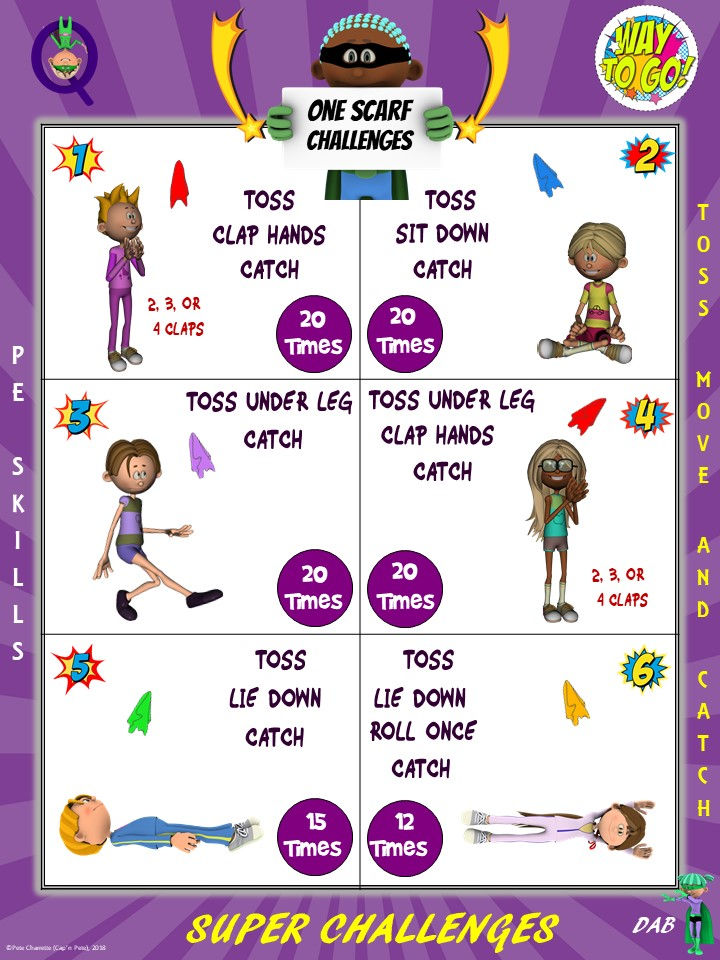
Equipment Needed: Each student will need 1 or 2 juggling scarves or lightweight grocery bags. If resources are limited, these can be shared between partners.
Create challenge sheets detailing a sequence of progressively challenging tasks involving the scarves or bags. Ensure the tasks encourage students to develop their tossing and catching skills while also integrating additional movements.
Hand out a scarf or bag along with a challenge sheet to each student. Guide them to attempt the tasks listed, which may include:
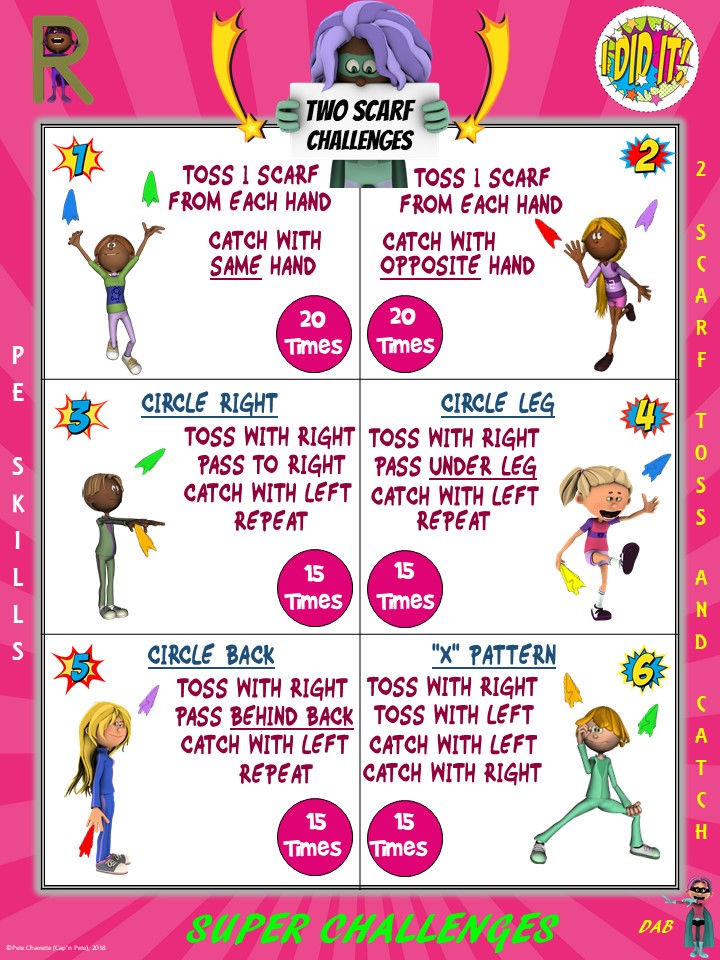
Tossing and catching the scarf or bag straight up and down, and across the body in a "rainbow toss."
Performing specific actions before catching, such as tossing the item and then touching their shoulder, foot, the ground, or spinning around.
Tossing and catching the item with added challenges, like clapping, sitting down, tossing under their leg, lying down, or rolling before the catch.
To incorporate social interaction and teamwork, introduce partner activities. These could involve tossing and catching between partners, mirroring movements, or creating a sequence of throws and catches to perform together.
Check out this Super Challenge Series- PE Skills Edition - 26 Challenge Sheet Set on Cap'n Pete's website store or here on Teachers Pay Teachers .
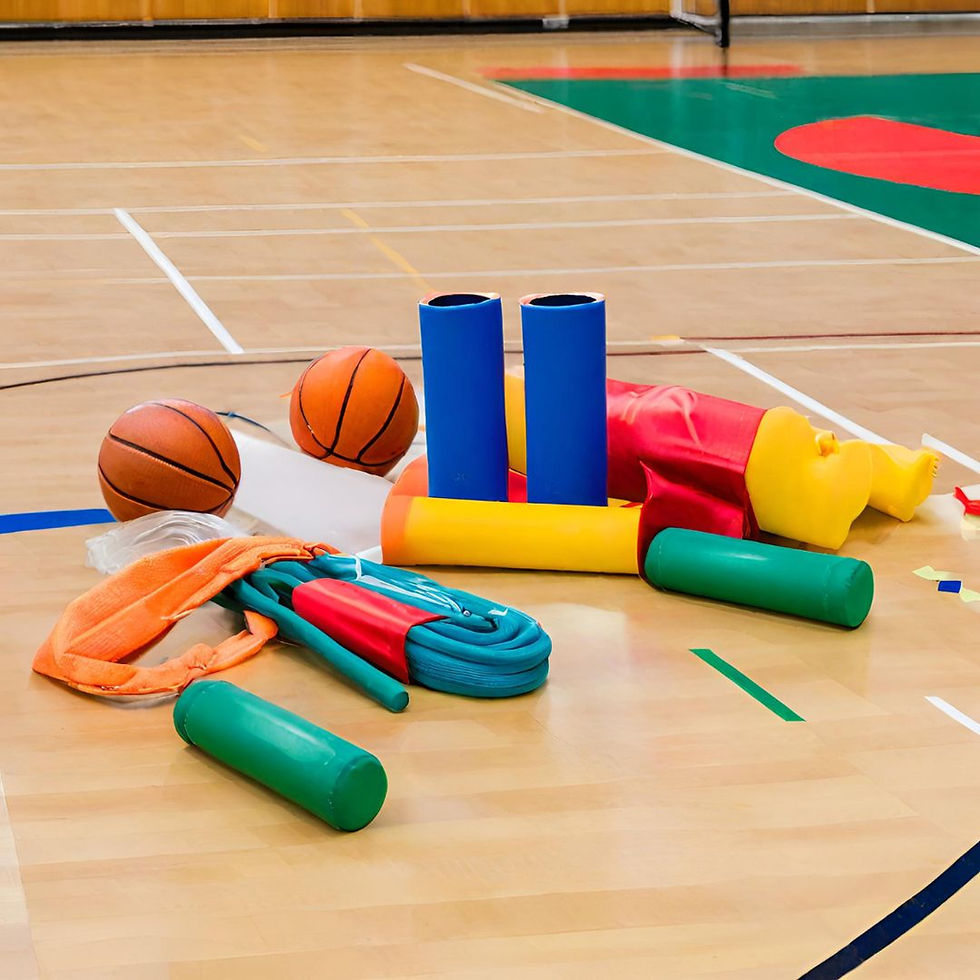
PE stations are an excellent way to organize physical education classes to maximize student engagement, skill development, and participation. By setting up different stations around the gym or outdoor area, students can rotate through a variety of activities, each focusing on different physical skills or challenges. This format not only keeps students active and reduces downtime but also caters to diverse interests and skill levels within the class.
Diverse Skill Development: Each station can focus on a different skill, ensuring students receive a well-rounded physical education.
Engagement: With multiple activities happening simultaneously, students are less likely to become bored or disengaged.
Personalized Learning: Stations can be tailored to challenge students at their individual skill levels, promoting personal growth.
Station Activity 1: Cup Stacking
Overview: Cup Stacking is an engaging and dynamic station activity designed to improve students' motor coordination and speed. Tasked with the rapid construction and deconstruction of stacking cup pyramids, students engage in a playful yet challenging exercise that enhances dexterity and concentration.
Equipment Needed: Each student, pair or small group needs 9 plastic cups for the station activities.

Each student, or students in a group station, begins with 9 cups.
The task is to build three pyramids, each consisting of three cups.
Once the pyramids are constructed, students must then de-stack the cups back into single stacks as quickly as possible.
Introduce a competitive and self-improvement element by having students time each other's upstack and downstack process, encouraging them to improve their speed with each attempt.
Increase the challenge for by having them create different pyramid configurations or by increasing the number of cups per pyramid.
Station Activity 2: Ball Handling Skills
Overview: This station focuses on enhancing students' ball handling skills through diverse and engaging exercises, aimed at improving coordination, dexterity, and ball technique mastery.
Equipment Needed: Basketballs or playground balls suitable for the age and skill level of the students.

Students begin with overhead taps to develop hand control and fluid motion.
They practice the rainbow toss, moving the ball in an arc from one hand to the other across the body.
They circle the ball around the waist, then legs, then head, maintaining grip throughout.
They perform a figure 8 dribble between the legs to boost coordination.
They try spinning the ball on one finger for balance and focus.
Students are encouraged to invent and try out their own ball handling exercises.
Station Activity 3: Javelin (Pool Noodle) Throw
Overview: The Javelin Throw station uses pool noodles to safely introduce students to the track and field event, focusing on developing throwing technique and upper body strength. It incorporates a friendly competitive element as students strive to achieve the farthest throw.
Equipment Needed: This station requires one pool noodle, a designated line for students to throw from, and an optional measuring tape for recording distances.

Students line up behind a set throwing line.
Taking turns, they throw the noodle as far as they can, focusing on proper form to mimic a javelin throw.
After each throw, distances can be compared to encourage a bit of friendly competition among participants.
Encourage each student to aim to beat their own personal best with each subsequent throw, fostering a sense of personal achievement and progress.
Click the link to view this large grouping of PE Stations: Triple Pack Bundle- 132 Movement, Skill and Sport Zones on Cap'n Pete's website store or here on Teachers Pay Teachers .

Small group PE games provide a unique opportunity for students to engage in more intimate and cooperative/competitive gameplay (i.e. small group crab soccer vs. regular soccer). These games are designed to enhance teamwork, communication, and social skills, as well as physical abilities. Small group settings allow for more individualized attention from teachers and can be particularly effective in developing specific skills or concepts.
Teamwork and Cooperation: Students learn to work together, developing social and cooperative skills that are essential beyond the PE class.
Focused Skill Development: With fewer participants, games can be tailored to target specific skills or areas of improvement.
Strategic Thinking: Engaging in games that require strategy encourages students to think critically and make quick decisions.
Small Group Game 1: Pin Ball
Overview: Pin Ball is a dynamic team PE game where players collaborate to toss a foam ball or flying disc to knock down the opposing team's bowling pin situated at their court's end. The game emphasizes essential physical skills such as throwing and catching, fostering teamwork and strategic play.
Equipment Needed: Each small group needs one ball, which can be a yarn ball, foam ball, or Frisbee. The playing area or court is marked off with 4 cones or gym lines. At each end of the court, place 2 hula hoops, and within each hula hoop, set up a bowling pin or an empty 2-liter bottle to serve as the target.

Game Instructions and Rules:
Two teams are spread out each within their court section, with 3 vs. 3 or 4 vs. 4 being optimal team sizes.
The game starts with one team holding the ball, aiming to pass it along their court and shoot to topple the pin within the opposing team's hoop.
Players in possession of the ball are restricted from moving with it but may pivot and take one step towards their aim (either a teammate or the pin), without progressing up the court.
Only "complete" passes allow a team to maintain possession. If the ball hits the ground, the opposing team gains possession from that spot.
Physical contact is prohibited in the game, especially on defense.
A team earns 1 point by successfully making passes that lead to a shot knocking down the opposition's pin.
The game is played for a predetermined duration or until a team reaches "10 points" first.
Small Group Game 2: Rescue Me
Equipment Needed: For "Rescue Me," you'll need several balls such as footballs, Nerf balls, and Frisbees for each playing group. The playing area is outlined with cones or lines to mark playing areas and end zones, accommodating small groups of 12 – 16 players or 6 – 8 per team. Balls are evenly dispersed on both sides of the playing area, which is divided by a mid-line with two end-zone lines set approximately 30 to 50 feet apart.

Teams divide their members, positioning half on their side of the playing area and the other half behind the opposing team’s end zone.
The objective is to "rescue" teammates from the opposite end zone by throwing them a ball that they must catch completely in the air.
Once a player in the end zone catches a ball, they must throw it back across the mid-line to their teammates in their home playing area.
A player is considered "rescued" if they make a successful catch in the end zone and then throw the ball back across the mid-line to be caught by a teammate in their home playing area.
Rescued players join their team and continue playing in the home court/field, aiding in the rescue of the remaining players.
The game continues with balls not caught being thrown back to either playing area, and the process repeats.
Victory is achieved when all members of a team have been successfully rescued.
Small Group Game 3: Catch Ball
Overview: Catch Ball is a team game where groups work together to make a playground ball bounce twice within the opposing team's court, emphasizing skills in both throwing and catching.
Equipment Needed: Each small group of 8 to 12 students needs one playground ball. Court boundaries can be marked with gym lines or small cones indoors, or playground chalk for outdoor play. Two square or rectangular courts are set opposite each other, with a serving line marked at the back right corner of each court.

Players distribute themselves within their court.
The game initiates with a serve from the back right corner into the opposing team's court. The serve must cross the mid-line.
The goal is to have the ball bounce twice within the opponent's court. A ball that bounces once or is dropped and then bounces once before being caught remains in play.
If a ball is thrown to the opposite side, bounces once, and then exits the court bounds, the serving team earns a point.
Should the ball bounce twice in a team's own court before crossing over, the opposing team scores a point. The serving right rotates through each team member after each point.
While the ball is live, players may pass it among teammates before it crosses to the opposing side. However, if it is dropped and bounces twice, the opposing team scores. The ball is allowed to bounce once during live play.
Teachers or student referees are advised to vocally count "ONE" upon the first bounce as a reminder to players.
Here are 25 "Dynamic" Small Group Breakout Games/Activities on Cap'n Pete's website store or here on Teachers Pay Teachers .
Final Thoughts
Wrapping up this journey through a diverse array of PE activities, it’s clear how vital variety is in our physical education curriculums. Each activity presented not only serves a broad spectrum of interests and learning objectives but also highlights the flexibility and innovation essential in meeting our students’ diverse needs. From the instant energy boosters to strategic tag games, and from skill-sharpening challenges to collaborative small group games, our mission remains steadfast: to nurture comprehensive physical and social skills that empower students for a lifetime.
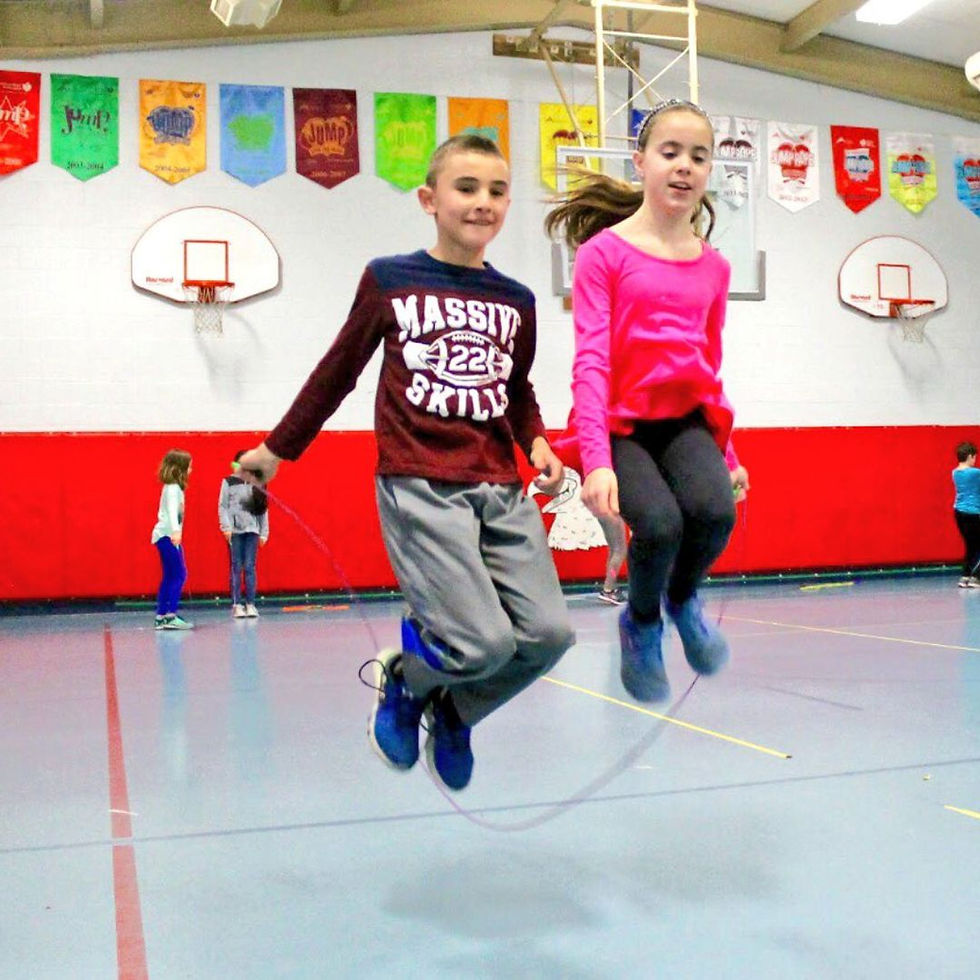
I invite my fellow PE teachers and professionals to see these activities as gateways to inspiration, learning, and adaptation. With a dash of creativity and some thoughtful tweaking, you can customize these activities to fit various ages, skill levels, and equipment availabilities, ensuring every student finds their stride.
Most importantly, physical education plays a pivotal role in fostering a lifelong appreciation for health and fitness. By creating an environment where physical activity is both fun and rewarding, we’re setting the foundation for our students to lead active, healthy lives long into the future. Let's continue to be inventive, engaging, and supportive, showing our students the boundless possibilities that physical education offers.

A Cool Free Resource!
Do you need some FREE PE skill-based challenge visuals? Do you need an organized task sheet set that has top of the line graphics and font? If so, Cap'n Pete's Power PE has you covered! Each task sheet consists of 6 manipulative skill-based challenges (1 sheet for beanbags, balloons, hula hoops, jump ropes, playground balls, and juggling scarves) that progressively get more difficult as the students work through the tasks. !

Fill in the form below to download this FREE Super Challenges - PE Skills: Visual Card Set with 6 task cards designed exclusively for working on manipulative skills during PE or in the classroom as a brain break or movement energizer!
This fun set of super challenge visuals was designed to be implemented with a wide range of ages.
Need a Large C ollection of Skill-Based Activity Visuals?
If you're looking for several skill-based activity progression visuals to use in your classes that incorporates a variety of PE equipment , look no further! Cap'n Pete has the ultimate PE skill-based resource - PE Activity: Super Challenge Series- PE Skills Edition. The packet is made up of 26 individual challenge visuals; one for each letter of the alphabet.!

Each task sheet consists of 6 manipulative skill-based challenges, that progressively get more difficult as the students work through the tasks. These challenges can easily be utilized by a physical education or classroom teacher to provide students with a quality, manipulative skill-based, highly engaging LEARNING experience they will absolutely LOVE! The Super Challenge Series sheets are “Kid-Friendly” (incorporating a Super Hero theme) and the set comes complete with a detailed activity plan and optional incentive tickets for completing each challenge sheet.
The challenges were designed to use typical PE equipment that includes activities using; beanbags, hula hoops, jump ropes, balloons, juggling scarves, paddles, rackets and playground balls. Students can work on their own, in partners or small groups to attempt the self-guided/paced progressions.
You can download them from either of the following platforms: Cap'n Pete's Power PE Website or Teachers Pay Teachers- Cap'n Pete's TPT Store

- Activities and Games
- Warm-Ups & Instant Activities
- Stations and Circuits
Related Posts
PE Games for Elementary Students: 6 Dynamic Physical Education Games to Transform Your Classes
Run, Walk, Thrive: How to Implement a Mileage Club at Your School
Energizing Education: The Power of Brain Breaks in the Classroom; Includes 12 Practical Activities
Recent Posts

How to Design an Engaging and Effective Elementary PE Curriculum

Physical Education and Childhood Obesity: Empowering a Healthier Generation

Understanding the New SHAPE America Physical Education Standards for 2024

Mastering the Dynamics of PE Classroom Management: A Comprehensive Guide
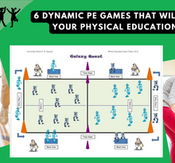
Physical Education Advocacy Amplified: Elevating Your Voice

Engaging At-Home PE Activities for Effective Distance Learning in Physical Education

Adopt-a-Gym: Enhancing Physical Education for Underfunded Schools

Best Physical Education Equipment Providers 2024: Your Complete Resource

PE Stations: 15 Fun Ideas for Active Engagement in Elementary Physical Education Classes

Exploring the Role of AI in Physical Education: Enhancing Efficiency and Effectiveness in Teaching PE
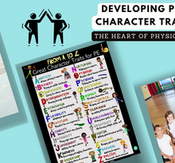
Cultivating Positive Character Traits for Students in Physical Education: Shaping Tomorrow's Leaders
- Games to Play with Friends
- Indoor Group Games and Activities
- Fun Outdoor Games for Kids
- Fun Frisbee Games for Kids
- Trivia Questions for Kids
- Fun Playground Games for Kids
- Preschool Themes
- St. Patrick’s Day
- Valentine’s day
- Thanksgiving
- 75 Clean Jokes for Kids to Tell at School
- 55 Funny Halloween Jokes for Kids
- 45 Cow Jokes for Kids that Adults Will Love Too
- 101 Winter Jokes for Kids
- Our Editorial Guidelines
- Meet Our Review Board
- Weekly Column
18 Fun PE Games Needing No Equipment
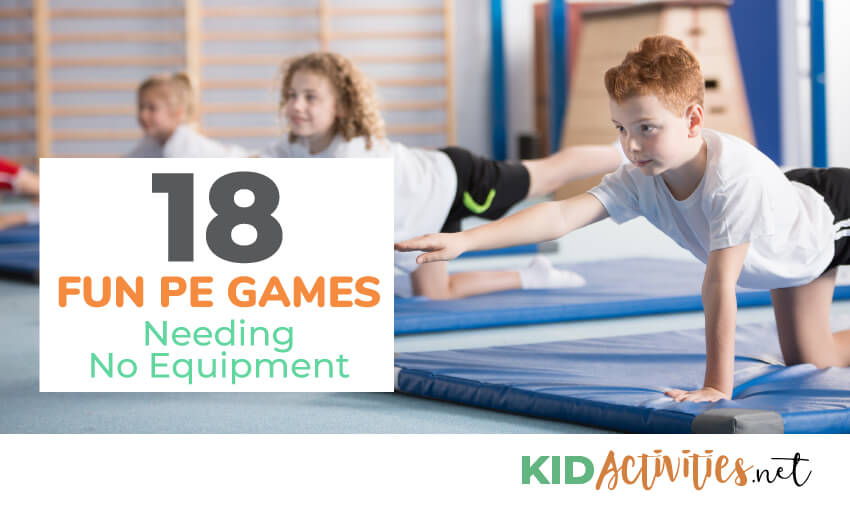
Learning some fun PE games that don’t need equipment can be very useful for busy PE teachers, parents and child care professionals.
They can help you provide the children you are caring for with fun activities that improve their fitness – without the need to pull out a cupboard full of equipment.
PE games that don’t need equipment are also useful as impromptu activities at BBQs, parties, and trips away. In this guide, I will be sharing 18 of the best PE games needing no equipment.
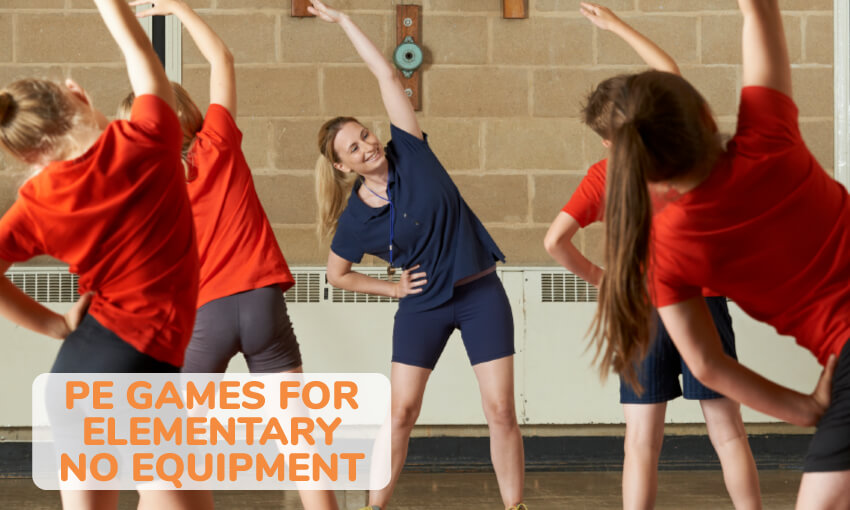
#1 – Red Rover
This classic game is a lot of fun and easy to learn. In Red Rover, the participants are split into two teams of equal size that form two lines opposite each other. The members of each team will hold hands.
Each team will choose a player from the opposing team, saying “Red Rover Red Rover, send Peter over” to nominate Peter.
Peter then has to let go of his team mates hands and attempt to run through the other team’s line, breaking their hold on each other.
If he manages to do so, he will choose a player from the opposing team to join his team’s line.
If Peter fails to break through the line, he will be forced to join the opposition team’s line.
The teams will alternate turns with the winner being the team that ends up with all of the players. Because all players will end up on the winning team, there are no losers in this game.
#2 – Captain’s Orders
Captain’s Orders is the perfect choice for a competitive group of kids who want to outdo each other.
It can really test your student’s endurance levels and improve their fitness. The game begins with one person being nominated to be the “Captain”. They must give out commands to the crew (the rest of the PE class).
The Captain is limited to a set of commands, which you can alter if you have specific fitness objectives for the class to reach. You could use a mixture of fun commands and physically demanding ones, like:
- Captain’s coming The crew must salute the captain and stand at attention
- Run to starboard/port The crew must run to the left (port) or right (starboard) sides of the room and touch the wall.
- Scrub the deck The crew must do 10 pushups
- Man the lifeboats The crew will perform 10 sit-ups while moving their arms like oars
You could have the crew members stand at attention after completing each task, which will make the more competitive students attempt to beat each other. After a few minutes, change captains so a few children get a chance to be in command.
#3 – Relay running races
Running relay races are one of the simplest PE games needing no equipment. Take the class outside and divide them into groups of 3 or 4 people each.
Have them run 100 to 200 metres each before moving on to the next person in the relay.
The mix-it-up relay race is fun variation of a normal relay running race. In a mix-it-up race, each person in a relay team will perform a different action.
The first person may have to skip, the second may have to run backwards, the third can run normally, and the fourth can hop. This makes the race more exciting and enjoyable to watch.
#4 – Cops and Robbers (Team tag game)
There are many fun variations of tag that are useful for PE classes. In “ Cops and Robbers ”, the PE class is divided into two teams — the cop team and the robber team. The cops will pursue the robbers to tag them.
Once a robber is tagged, they must go to a section of the playing area that has been nominated as the “jail”.
Robbers who have not been tagged can release their team mates by sneaking into the jail and tagging them.
The game is complete when the cops have managed to round up all of the robbers. Playing this game in an outdoor area with plenty of places to hide can make it even more enjoyable.
#5 – Wheelbarrow races
This activity is very challenging and a lot of fun. It’s best suited for fit students with decent upper body strength. Split the group up into teams of two people that will stand on one side of the gymnasium.
Each team will have one person go into plank position while the other grabs them by the ankles.
When you say “Go” the person in plank position will go into pushup position while the person holding their ankles lifts them — forming a wheelbarrow .
They will attempt to walk the wheelbarrow to the other side of the room. Once there, they will touch the wall and switch roles before racing back. The first team back to the starting point wins.
#6 – Duck Duck Goose
Duck Dusk Goose is a wonderful PE game for younger children. The rules are simple and they will get plenty of exercise. Start by having the children sit in a circle facing the middle.
Nominate one person as “it”. They will walk around the circle touching each person on the shoulder and saying if they are a duck or a goose. If the person is nominated as being a duck, they remain seated.
However, when someone is nominated as being a Goose, they must get up and chase “it” around the circle and tag them before they make it to the empty spot where the Goose was sitting.
#7 – Headstand/handstand practice
There are many advantages to teaching basic gymnastic techniques in the classroom. Headstands and handstands are a particularly useful gymnastic skill that can be practiced indoors on carpet or outdoors on grass.
Begin by teaching students correct headstand form — from getting into a correct starting position to eventually lifting their legs and completing the move.
Once they understand the basics and know how to perform a headstand safely, have them split into pairs for practice.
One student in each pair should be a “spotter” who helps the other student with their form and holds their legs. After they they have performed a few headstands have them switch roles.
Move onto the handstands next, with groups of three (one person practicing and two to hold their legs). If you are performing this activity outdoors, use trees to prevent students from overbalancing.

#8 – High Jump Competition
This simple game is a great way for kids to have some fun while testing their athleticism.
Have the children split into groups of two and stand next to a brick wall. Have them jump as high as they can, touching the highest brick they can reach with their hand. Each child gets 3 jumps.
The highest jumper in each pair gets to go through to the next group, were they are paired off again and will get another three jumps.
Eventually, you will discover who the highest jumper in the group is. You could also have a standing long jump competition to see who can jump the furthest.
#9 – British Bulldogs
British Bulldogs is a classic version of tag and one of the most popular equipment-free PE games.This game is also commonly known as “Bullrush” and “Cats and Mice”.
The game starts with all of the players at one end of a playing area. A basketball court works well for small groups, while half a soccer or football field is better for larger groups.
One player is selected to be “it”. They will wait in the middle of the playing area.
When you say go, the children will attempt to run from one side of the playing area to the other without being tagged. If they are tagged, they will join the “It’ player in the centre of the playing area.
#10 – Simon Says
This is another classic game that young children love. It is easy to incorporate it into a PE class and everyone will know the rules.
Start by either choosing a player to be “Simon” or by nominating yourself to play this role (usually better as you can then choose appropriate PE activities).
The students must follow the directives given by “Simon” as long as he starts each one with “Simon says…”.
If a student accidentally carries out a directive that does not start with “Simon says…” they are out of the game.
You could mix up fun directives like “Simon says bark like a dog” with “Simon says, do 5 pushups” to get the PE component into the game.
The winner of the game is the last person who has successfully followed all of Simon’s orders. They get to become the next “Simon”.
#11 – Gymnastic Talent Show
Have the students split into groups of 3-4 children each and ask them to devise a short gymnastic routine that shows off their skills.
Encourage them to do their best, but remind them to only perform stunts they are comfortable with.
During the next 10 minutes, walk between the groups and help them plan their routines, suggesting gymnastic feats appropriate for their skill levels. Remind them that they can help each other perform their rolls, handstands, and jumps.
After the 10 minutes has expired, have the groups perform their routines for each other.
#12 – Leap Frog Race
This fun PE game can be enjoyed by children of all ages. Have your students split into groups of 2 (ideally, about the same height). Each group must race over a course that is 50 yards in length.
However, they will have to cover the course by leap frogging each other! If some kids have trouble jumping over their partner, let to do a couple of jump squats next to their partner instead.
To make the race more challenging, you could include “exercise pit stops” along the way.
At each exercise pit stop, the children will have to perform a certain number of exercises. This could be star jumps, pushups, burpees, or whatever exercise you think the children would benefit from.
#13 – Light The Dynamite
This is a very challenging fitness game shared by Games Fitness . The class is split into any number of teams that are the same size, with a minimum of 4 players per team.
If a team doesn’t have the same number of players, you may have to alter how many repetitions of exercise they perform to keep the game fair.
Have each team sit lengthwise in a straight line, about one arms length from the next person in their team. So, if you have 5 teams, you should have five lines of people.
You will give players in specific positions a designation of “fuse” or “dynamite” for each round. For example, you might say players 1 and 2 in each group are fuses, followed by one dynamite player, one more fuse player, and a final dynamite player.
There can be any number of fuse and dynamite players in each row.
The game starts with all players in a plank position. When you say “Light the dynamite!“, the first player is activated.
If they are a fuse player, they will immediately flip over and do 10 sit-ups then tag the next player in the line to activate them. The fuse player will hold a V-hold position after doing their sit-ups – which means they are an activated fuse.
If the next player is a fuse, they will do their sit-ups also. However, if the next player is a dynamite player, all of the dynamite players in the team must jump up and do 20 burpees.
The first team to finish their chain of fuses and dynamite is the winner.
You can alter the types of exercises used and the number of repetitions for each exercise to make the game harder or easier.
#14 – I Spy, Fitness Version
I, Spy is a favourite game of children everywhere. One person will identify a physical object that is visible nearby and everyone else will have to guess what it is, using a series of questions.
This game combines I, Spy with 20 Questions to provide the kids in your PE class with an excellent workout.
Start by spotting an object in the area, like a basketball ring. Going around the class, each student can ask one question about the item you are thinking of, or guess what it is.
If the answer to their question is “No” or their object guess is incorrect, the entire class must perform an exercise.
The number of repetitions they must perform increases every time they get the answer wrong. So, the game might go like this:
PE Teacher: I’ve identified an object, your turn to guess – starting with Pete.
Pete: Is it an animal?
PE Teacher: No! Do 3 pushups everyone. Next question please Sam.
Sam: Is it alive?
PE Teacher: No! Do 5 pushups everyone. Next question please Rebecca.
Rebecca: Is it made of wood?
PE Teacher: Yes! It is partially made from wood. Next question please Mark.
Mark: Is it a basketball ring?
PE Teacher: Well done.
#15 – Plankerpillar
This is a challenging game that will test the fitness of students and force them to work as a team.
Divide the class into teams of at least 5 people each. Have each team line up alongside each other in separate rows and nominate a finish line for the race.
When you say “Go”, all players will go into plank position except for the player furthest away from the finish line.
They will move to the front of their team (closest to the finish line) and enter into plank position. Once they have started to plank, they will yell “go!” and the next player will move from the rear to the front.
This is repeated until the group reaches the finish line. As the effects of being in plank position begin to kick in, the team’s players will be yelling at everyone to hurry up!
#16 – Funny Running
This is a super fun PE game that young children will love. The objective of funny running is to get from one side of the gymnasium to the other while running like an animal.
You can choose a different animal for each pass, including monkeys, snakes, horses, and kangaroos.
You can also have the kids run across the gymnasium while performing a funny dance like the Floss Dance or teach them some disco moves . Put some catch music on and they will have the time of their lives as they exercise!
#17 – Jump!
Jump is another simple game that is ideal for young children’s PE classes. Have the kids line up against one wall of the gymnasium or on a boundary line of the sporting field.
Then, simply yell out “1 Jump” and the kids can take the biggest jump forward they can do from a standing start. You can vary this by change the number of jumps you allow each time and sometimes throwing in “Steps”.
#18 – Elimination Running
This exhausting game will help you discover which kids are the fastest in the class.
Have your students line up against a wall of the gymnasium. When you say “Ready, Go!”, they will run to the other wall. If you say “Ready, Go!” again while they are running towards the wall, they must turn back and reach the wall that they came from.
If you blow your whistle, any student who hasn’t reached the wall will be eliminated. Eventually, you will only have a small number of children left in the group.
I hope you found 18 Fun PE Games Needing No Equipment . Bookmark our website for more fun PE activities for kids .
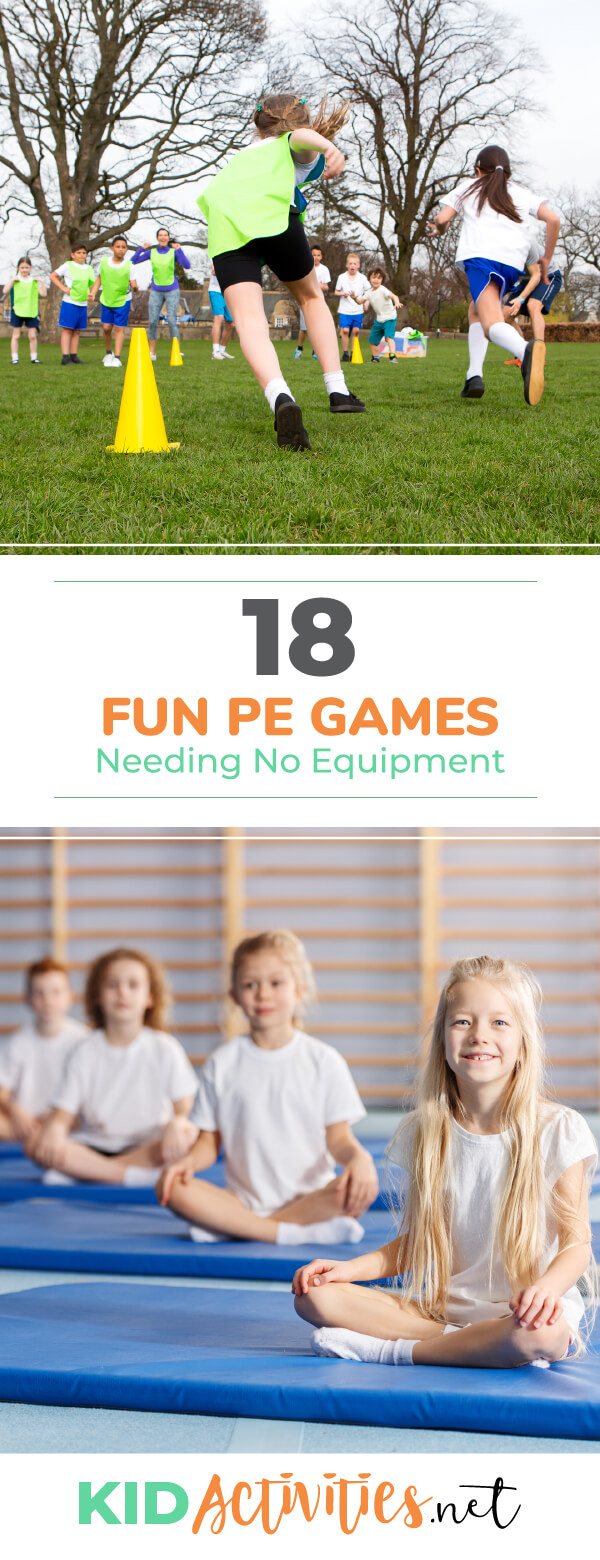
A father to three young boys with a passion of homeschooling. I am always seeking new ways to help them learn, grow, and have fun. I have a passion for traveling with the family and exposing our kids to new experiences and life lessons.

IMAGES
VIDEO